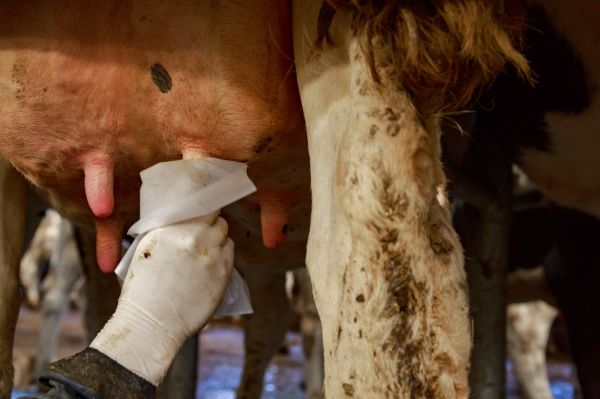Collaborating on mastitis control

In its recent newsletter, AHI outlines that the objective of this free consult is to ‘help facilitate a collaborative approach between service providers and herdowners, to ensure better SCC and mastitis control on farms’. It highlights the important roles that different professions play in supporting herdowners in the management of mastitis including farm and milk-quality advisors, veterinary practitioners, and milking-machine technicians.
Multi-disciplinary approach
The consult has been developed by AHI and the CellCheck Technical Working Group to provide a framework to kickstart ongoing multi-disciplinary support for dairy farmers who struggle with mastitis and/or high SCC levels, according to AHI.
It emphasises that all service providers including veterinary practitioners, milking-machine technicians, farm advisors and milk-quality advisors that wish to be involved in these consults need to complete training. This training, AHI says, provides the tools to support and assist dairy farmers to develop a strategy that will ultimately lead them to better mastitis control and less antibiotic use on their farms. The latter is one important aspect of mastitis prevention, which has gained increased prominence given the necessity under EU regulations, to minimise antibiotic use in general and, in addition, eliminate blanket use of antibiotics in dry-cow therapy programmes. During the consult, all relevant areas, including the cow, the milking routine, the environment and records will be examined to enable a farm-specific plan to be created.
The herdowner nominates the service providers they want to include on the team, such as farm advisor, milking-machine technician and vet. The consult is available throughout the entire lactation and there are no eligibility requirements necessary to register. This service is funded through the Targeted Advisory Service on Animal Health (TASAH) and supported by the Rural Development Programme and coordinated by AHI.
Post-milking teat-spraying
Highlighting one of the most important aspects of teat care and mastitis prevention, AHI points to post-milking teat disinfection as one of the key steps and one that is often overlooked or inadequately carried out in the milking parlour. Michelle McGrath, CellCheck assistant programme manager describes teat spraying as ‘the hidden gem’ such is the importance she places on a properly carried out and regular teat-spraying programme on dairy farms. She calculates that teat spraying can reduce the risk of new mastitis infections by 50 per cent or more, but it can only achieve this if it is done thoroughly and throughout the entire lactation. “If the whole teat is disinfected after milking, it reduces the bacterial load and, thus, the risk of infection. Certain bacteria (Staphylococcus aureus and Streptococcus agalactiae) in milk from an infected cow may be found on the liners and transferred to the teat skin of the next five to six cows that are milked with that unit. Once on the teat skin, the bacteria multiply (especially at sites of teat lesions), and so increase the risk of infection of the quarter via the teat canal.”
Michelle describes how post-milking teat disinfection also helps keep teat skin healthy and heal teat lesions, and these actions, she says, have an important contribution to mastitis control. “Proper application of teat disinfectants is essential for optimal results as the benefits of teat disinfection are lost if the teat disinfectant does not cover all the teat skin. While spraying may be quicker and more convenient than teat dipping, ensuring thorough coverage is key to its effectiveness. It is essential that the entire teat (everywhere the liner has touched) is disinfected and not just the teat end," she says.
She urges farmers to choose a teat-spray product carefully: “When choosing a disinfectant beware of unregistered products. Unregistered products may not provide the desired level of protection and can pose risks from residues to both animal and human health as well as the environment. If the product is registered it will have either a PCS or a Health Products Regulatory Authority (HPRA) – previously IMB – number on the drum label.”
Michelle further highlights the fact that teat disinfectants making a medicinal claim (e.g. aid in the prevention of mastitis) are subject to registration and regulation by the HPRA. If no medicinal claim is made, teat disinfectants are classed as biocides, and these are subject to registration and regulation by the Department of Agriculture, Food and the Marine (DAFM).
Further information in the AHI newsletter provides straightforward advice on product selection: “Ready to use (RTU) products are recommended as best practice, particularly for farms experiencing difficulties sourcing water of adequate quality or mixing solutions consistently.”




